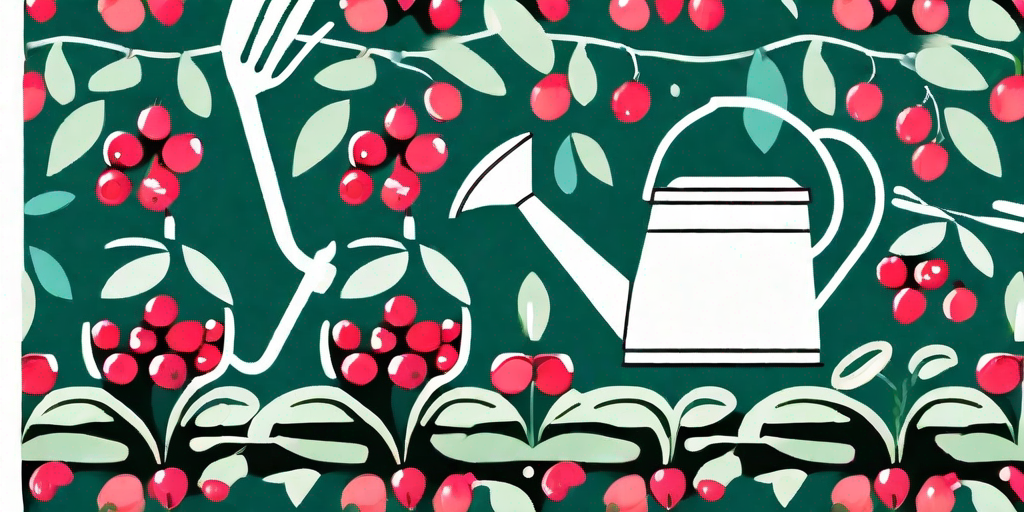
Welcome, green thumbs and berry enthusiasts alike! Today, we're diving into the delightful world of lingonberries. These tart, red berries are not only a Scandinavian staple, but also a fantastic addition to any home garden. Whether you're a seasoned gardener or a newbie, our comprehensive guide will help you grow and care for your own lingonberry plant. So, put on your gardening gloves, and let's get started!
The Lingonberry Lowdown
Before we delve into the nitty-gritty of lingonberry cultivation, let's take a moment to appreciate these little red gems. Lingonberries, also known as Vaccinium vitis-idaea, are native to the boreal forest and Arctic tundra. They're a close relative of cranberries and blueberries, and they pack a punch in terms of flavor and nutritional benefits.
These berries are tart, slightly sweet, and full of antioxidants. They're often used in jams, sauces, and desserts. But beyond their culinary uses, lingonberries also have a rich history in folk medicine, being used to treat urinary tract infections, improve digestion, and boost the immune system. Now, who wouldn't want this superberry in their backyard?
Planting Your Lingonberries
Now that we've whetted your appetite for lingonberries, let's move on to the exciting part - planting your very own lingonberry plant. Fear not, for this is a journey we shall embark on together, every step of the way.
Choosing Your Plant
First things first, you need to choose your plant. Lingonberries come in different varieties, each with its own unique characteristics. Some popular varieties include 'Red Pearl', 'Erntedank', and 'Sussi'. Research each variety to find out which one suits your taste and climate best.
Once you've chosen your variety, you can purchase lingonberry plants from a local nursery or online. Make sure to choose a healthy plant with no signs of disease or pest damage. A good lingonberry plant should have vibrant green leaves and a strong root system.
Preparing Your Soil
Lingonberries prefer acidic soil with a pH between 4.5 and 5.5. You can test your soil's pH using a soil test kit. If your soil is too alkaline, you can lower the pH by adding sulfur or peat moss.
These plants also prefer well-draining soil. If your soil is heavy clay, consider adding some sand or compost to improve drainage. Remember, a happy lingonberry plant is one that doesn't have wet feet!
Caring for Your Lingonberries
Now that your lingonberries are in the ground, it's time to learn how to care for them. Don't worry, these hardy plants are relatively low maintenance, but they do appreciate a little TLC.
Watering and Feeding
Lingonberries like to be kept moist, but not waterlogged. Water your plants regularly, especially during dry spells. A good rule of thumb is to water deeply once a week, or more often during hot weather.
As for feeding, lingonberries are not heavy feeders. A light application of a balanced, slow-release fertilizer in the spring should be enough to keep your plants happy and productive.
Pruning and Harvesting
Pruning is not usually necessary for lingonberries, but you can remove dead or diseased branches to keep your plant healthy. As for harvesting, you can start picking the berries when they are fully red and slightly soft to the touch. Remember, the longer you leave the berries on the plant, the sweeter they become!
FAQs
Now, let's address some common questions about growing and caring for lingonberries.
- Are lingonberries easy to grow?
Yes, lingonberries are hardy plants that are relatively easy to grow, especially in cooler climates. They are also resistant to many common pests and diseases.
- Can I grow lingonberries in a pot?
Absolutely! Lingonberries are great for container gardening. Just make sure to choose a pot with good drainage and use a potting mix designed for acid-loving plants.
- How long does it take for a lingonberry plant to bear fruit?
Lingonberry plants usually start bearing fruit in their second or third year. However, they reach peak productivity around their fifth year.
Conclusion
There you have it, folks! A comprehensive guide to growing and caring for your own lingonberry plant. With a little patience and care, you'll be enjoying your own homegrown, antioxidant-rich berries in no time. So, what are you waiting for? It's time to get your hands dirty and start planting!
Remember, the joy of gardening is not just in the harvest, but also in the journey. So, enjoy every moment of your lingonberry growing adventure. Happy gardening!















